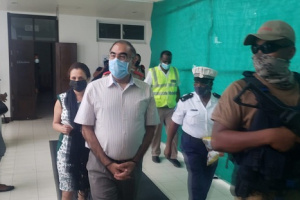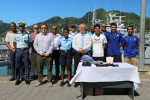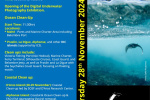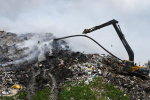Plan for new dam in Seychelles raises concerns about impact on rare, unique tree
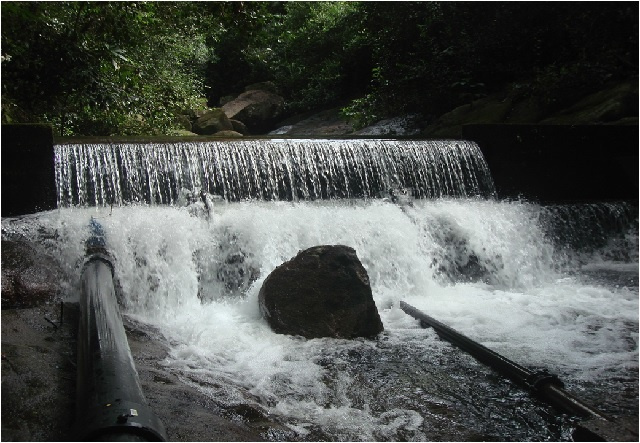
The construction of the dam in the western district of Grand Anse Mahe may lead to the extinction of the critically endangered jellyfish trees. (Public Utilities Corporation)
(Seychelles News Agency) - The construction of a new dam in Seychelles is once again being seen as a threat to one of the world's rarest trees unique to the islands.
Environmentalists say the impact of the construction of the dam in the western district of Grand Anse Mahe may lead to the extinction of the critically endangered jellyfish trees, known locally as bwa mediz.
The concern comes now that the environmental impact assessment of the project is completed ahead of a final decision on the implementation of the project.
"My big worry is that these ancient endemics can't walk away. Can you imagine this unique rare species where the only viable population is, they are going to blast it into rocks to build a dam," local environmentalist Lindsay Chong Seng told the Seychelles Broadcasting Corporation television recently.
The construction of the dam is being planned in an area where the bwa mediz grows in its natural state. The plant is found only in three other locations on Mahe – the main island of the Seychelles – 115 islands in the western Indian Ocean.
The four areas the tree is found in include Bernica, where the new dam is expected to be constructed, and in the mountainous area of Mont Sebert, Mont Copolia and Mont Jasmin.
The tree is known as the jellyfish tree as the flowers resemble the tentacles of a jellyfish or the snakes that form the hair of the ancient Greek Goddess Medusa, which accounts for its scientific name Medusagyne oppositifolia.
"Bwa mediz is emblematic for Seychelles as once it was considered as one of the rarest plants in the world," Chong Seng had told SNA in a previous interview.
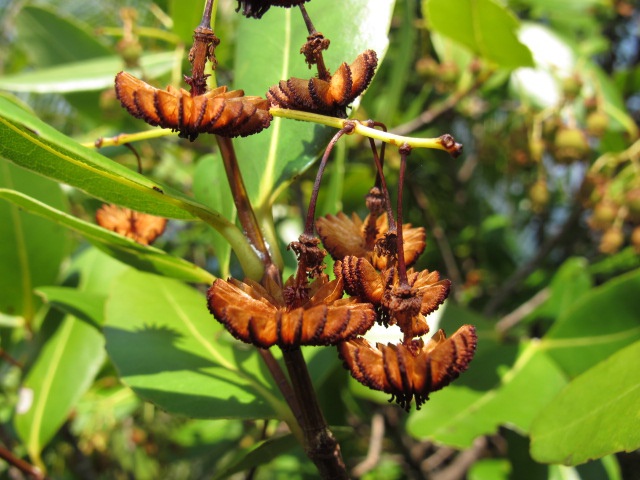 |
| The tree is known as the jellyfish tree as the flowers resemble the tentacles of a jellyfish. (Christopher Kaiser-Bunbury) Photo license: CC-BY |
For decades it was believed the species was extinct. No specimen was seen in Seychelles between 1903 and 1970 when it was rediscovered. It remains on the critically endangered list of the International Union for the Conservation of Nature.
Back in 2016, it was estimated that the population of the jellyfish tree was only around a hundred mature individuals.
"Seychelles has a huge amount of funding based on biodiversity programmes, if we now turn around and kill off one of our flagship species this will tarnish our reputation," explained Chong Seng, a member of the Plant Action Conservation Group.
Chong Seng added that authorities must take into account that the island nation boasts itself as a champion and defender of the environment and must live up to its reputation.
However, the final decision for the go-ahead of this project lays with Seychelles' Ministry of Environment. That's a decision that will not be taken lightly, according to the Director-General for Waste, Enforcement and Permit at the ministry.
"For us, it is a big decision to make, a very important decision to make. The jellyfish is an endangered species and we are very concerned so we are yet to make a decision," said Nanette Laure.
Along with the trees other endemic and rare species of flora and fauna such as the tiger chameleon and the scopes owl also face threats with this development.
"We will assess the quantity of biodiversity in the area and come up with proper conservation protocol," explained Ashley Dias, who added that "all effort will be taken by the government to ensure that endangered plants and animals are not affected."
The director for biodiversity conservation had told SNA in a previous interview that the impact on the environment and biodiversity of the area is something that will be given a lot of attention.
In a statement to the press this week the Public Utilities Corporation (PUC) said "the Grand Anse dam design has not yet been finalized. Environmental matters are being taken care of by the relevant department and that it is up to them to decide on the necessary course of action."
The construction of a third dam was announced by the island nation's utility company in November 2017. It is estimated that the dam will be in an arch shape, made of concrete and approximately 40 metres high with a capacity of one million cubic metres.


